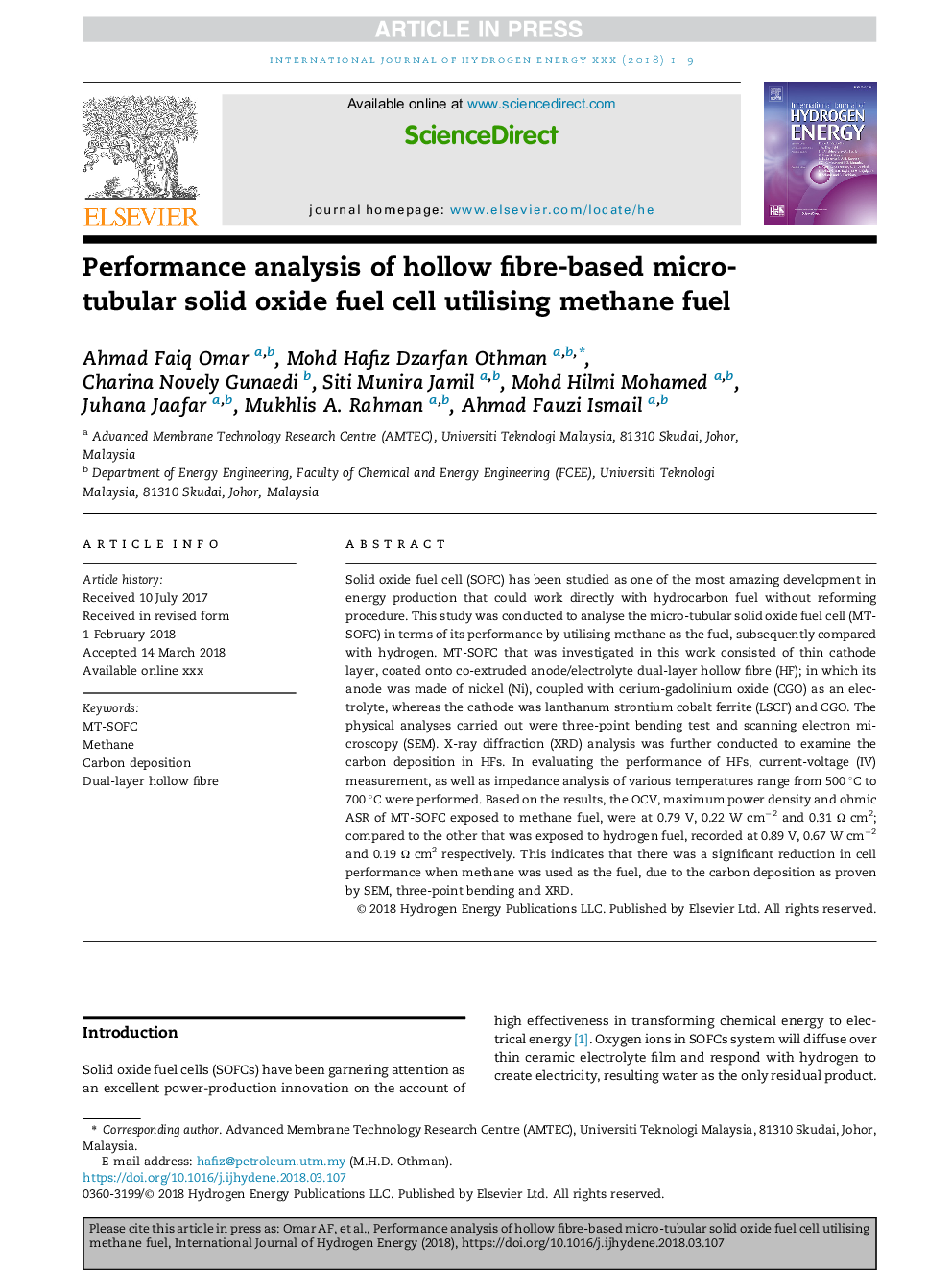ترجمه فارسی عنوان مقاله
تجزیه و تحلیل عملکرد سلول سوختی اکسید جامد با میکرو توبولکای خالی با استفاده از سوخت متان
عنوان انگلیسی
Performance analysis of hollow fibre-based micro-tubular solid oxide fuel cell utilising methane fuel
| کد مقاله | سال انتشار | تعداد صفحات مقاله انگلیسی |
|---|---|---|
| 138782 | 2018 | 9 صفحه PDF |
منبع

Publisher : Elsevier - Science Direct (الزویر - ساینس دایرکت)
Journal : International Journal of Hydrogen Energy, Available online 5 April 2018

